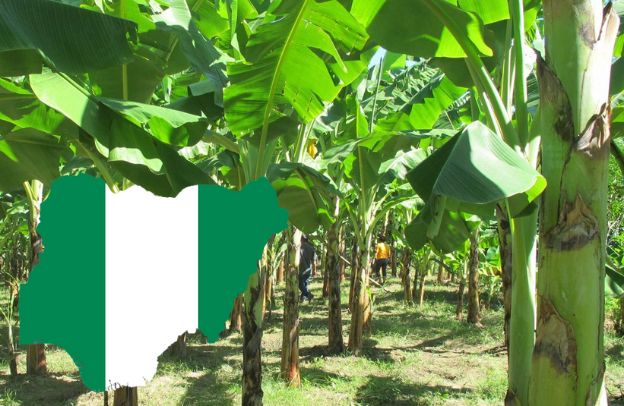Ultimate Guide to Harvesting and Storing Maize: A Path to Agribusiness Success

Unlock the secrets to transforming your maize crops into a thriving agribusiness! In “The Ultimate Guide to Harvesting and Storing Maize,” discover expert strategies that not only maximize yield but also safeguard your investment. Whether you are a seasoned farmer or just starting out, this comprehensive guide will equip you with the tools you need to turn your maize harvest into a lucrative success story. Don’t just grow—grow smart!
Want to learn more about storytelling? Start by downloading the first chapter of The Storytelling Mastery.
The Importance of Proper Harvesting and Storage
Maize, or corn, is not just a staple food; it is a cultural cornerstone for many African communities around the world. According to the Food and Agriculture Organization (FAO), maize is one of the most widely produced grains globally, with Africa alone accounting for approximately 20% of total production.
However, the journey of maize from field to table involves more than just planting and harvesting; it demands careful attention to storage practices. Proper harvesting and storage techniques are vital for maintaining the quality and nutritional value of maize.
See also The Secret to Growing High-Yield Maize: Expert Tips and Tricks
As you embark on your agribusiness journey, remember that sharing stories of successful practices can inspire others. The tale of a local farmer in Ghana, for instance, who implemented innovative storage solutions, showcases how knowledge transfer can uplift entire communities.
By collaborating and sharing such stories, you not only improve your own practices but also contribute to a larger narrative that fosters growth.
Timing the Harvest: The Art of Knowing When
Timing is everything in agriculture and knowing when to harvest your maize can make the difference between a successful crop and a disappointing yield. Maize is typically ready for harvest about three to four months after planting, when the ears are fully formed, and the husks have dried.
The kernels should feel hard and milky when squeezed. Sure! Here are three effective ways to determine the right timing for harvesting maize:
- Kernel Maturity Test: Check the moisture content of the kernels. Maize is typically ready to harvest when the moisture level drops to around 20-25%. You can do this by performing a kernel dent test: press a kernel with your thumbnail—if it leaves a mark and the kernel has a hard outer shell, it’s close to maturity.
- Visual Indicators: Observe the plant for physical signs of ripeness. The husks should turn brown and dry, and the silks (the threads coming out of the ears) should be dark brown and withered. Additionally, the leaves will begin to yellow and dry out as the plant nears harvest time.
- Days to Maturity: Consult your seed variety’s days to maturity, typically ranging from 80 to 120 days depending on the type. Use this as a baseline, but combine it with environmental factors like weather conditions to make a more informed decision. Always monitor your crops closely as they approach the estimated maturity date.
By combining these methods, you can better gauge the perfect moment to harvest your maize for optimal quality and yield!
Method of Harvesting: Techniques for Success
Once you have determined the right time to harvest, the next step is to do it properly. Using a sharp knife or pruner, cut the stalks about two inches above the ear. This technique minimizes damage to the kernels and helps preserve their quality. As you harvest, handle each ear carefully to prevent bruising, which can lead to spoilage.
Stories abound of innovative harvesting methods from within the African diaspora. For instance, farmers in Zimbabwe have adopted new tools that allow for more efficient harvesting while also being environmentally sustainable.
See also Harvesting Engagement in your Agribusiness: How Storytelling Can Cultivate True Connections
By sharing these techniques through community workshops, they have not only improved their yields but have also created a sense of solidarity.
Handling and Cleaning Ears: The Next Step
Once harvested, the next task is to clean the ears of maize. Remove the husks and silk but leave the kernels intact. This process ensures that the maize is free from debris and ready for storage. The importance of gentle handling cannot be overstated; even minor bruising can lead to rot or mold.
Remember this. Cleaning maize ears is essential for maintaining quality and preparing them for storage or processing. Here are three effective ways to handle and clean maize ears:
1. Manual Cleaning
- Husk Removal: Start by removing the outer husk layers. This will expose the ear of corn and allow for better cleaning.
- Brush Off Debris: Use a soft brush or cloth to gently scrub off any dirt, silk, or remaining husk pieces.
- Inspect for Damage: Check for any signs of pest damage or mold. Remove any damaged kernels or areas.
2. Water Rinse
- Prepare a Water Bath: Fill a basin with cool water. If needed, you can add a small amount of vinegar to help with sanitization.
- Soak and Agitate: Submerge the maize ears and gently agitate them to loosen dirt and silk. Allow them to soak for a few minutes.
- Rinse Thoroughly: Remove the ears and rinse them under clean running water to wash away any remaining debris.
3. Drying and Storage
- Pat Dry: After cleaning, use a clean towel to pat the maize ears dry. This helps prevent mold during storage.
- Air Dry: Lay the cleaned ears in a single layer in a well-ventilated area to air dry completely.
- Store Properly: Once dried, store the maize ears in a cool, dry place, ideally in a breathable container to avoid moisture buildup.
By following these methods, you can effectively handle and clean maize ears, ensuring they are ready for storage or further processing! As you engage in this part of the process, think about how storytelling can elevate your work.
See also Financing Africa’s Agribusiness Revolution: A Trillion-Dollar Investment Opportunity
Share your journey and experiences on social media or within community groups. You may find that your story resonates with others, fostering a culture of support and collaboration.
Storing Maize: Short-term vs. Long-term Options
Proper storage is crucial for maintaining the quality of your maize. For short-term storage, keep the ears in a cool, dry place like a garage or shed, ensuring adequate air circulation. For long-term storage, consider drying the ears and storing them in a root cellar or pantry, where conditions are optimal.
A powerful example comes from the diaspora’s engagement in community gardens. In the United States, organizations like the African Diaspora Network have successfully created spaces where individuals can learn about agricultural practices, including effective storage techniques.
These collaborative efforts not only improve food security but also create a network of support among community members.
Preservation Techniques: Extending the Life of Your Maize
To ensure that your maize retains its quality over time, consider preservation techniques such as canning, freezing, or drying. Each method has its benefits, and by mastering these techniques, you can extend the shelf life of your maize, ensuring that it remains flavorful and nutritious.
In your journey, you might hear stories about how families in Nigeria have preserved maize using traditional methods passed down through generations.
By blending these time-honored techniques with modern preservation practices, they not only honor their heritage but also teach others in their community how to make the most of their harvests.
Best Practices for Storing Maize
To ensure that your stored maize remains of high quality, adhere to best practices. Store your maize in a cool, dry place, use airtight containers, and keep it away from light and moisture. Regularly monitor for signs of mold or rot, and remove any compromised ears immediately.
Your story matters in this process. By sharing your successes and challenges in storing maize, you contribute to a broader understanding of best practices. Use platforms like blogs or social media to connect with others who share your passion, building a community of practice that spans the globe.
Drying and Grinding Maize: Transforming Your Harvest
Drying your maize is a vital step for long-term storage. You can lay the ears in the sun, use a dehydrator, or hang them in a well-ventilated area until the kernels are hard and moisture content is low.
After drying, grinding maize can be achieved through hand-cranked or electric grinders, allowing you to create cornmeal, grits, or feed for livestock.
Imagine the vibrant community in the Caribbean, where families gather to grind maize together, sharing stories and recipes. These traditions not only preserve cultural heritage but also strengthen communal ties. Your ability to connect through food preparation can spark similar collaborations within your network.
Uses of Stored Maize: Beyond the Kitchen
Stored maize has diverse applications, extending well beyond culinary uses. You can make cornbread, tortillas, or polenta, and ground maize can serve as feed for livestock. Additionally, maize can be processed into cornstarch, corn syrup, or even biofuel, showcasing its versatility.
See also Why Do People Consume Cassava?
Within the African diaspora, maize has cultural significance in various rituals and celebrations. For instance, in many African communities, maize is used in ceremonies to mark the harvest season.
By participating in or sharing these traditions, you weave your personal story into the fabric of collective memory.
Conclusion: Harvesting the Rewards of Knowledge
In this guide, you’ve explored the essential steps for harvesting and storing maize, but the journey doesn’t end here. The lessons learned and stories shared can ignite a movement within the African diaspora, emphasizing the importance of collaboration and mutual support in agribusiness.
As you continue on your agribusiness journey, remember that your story—your unique experiences, challenges, and successes—has the power to inspire and connect.
Join hands with fellow entrepreneurs, share your knowledge, and cultivate a spirit of collaboration that enriches not only your life but also the lives of those in your community.
Together, you can turn the humble maize crop into a powerful symbol of resilience and success, paving the way for a brighter future in agribusiness for the entire African diaspora.
Want to learn more about storytelling? Start by downloading the first chapter of The Storytelling Mastery.





